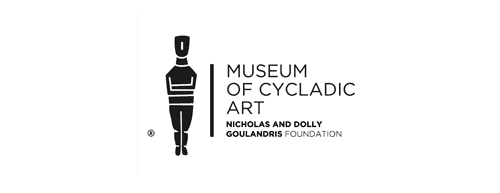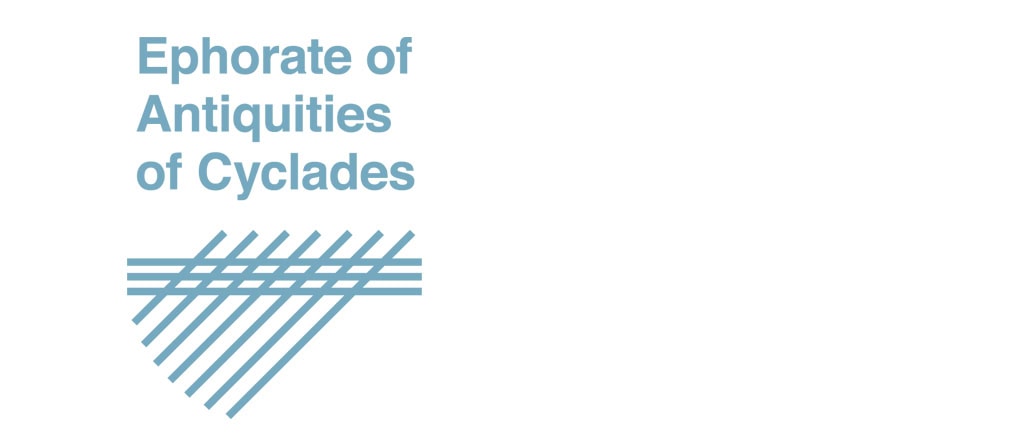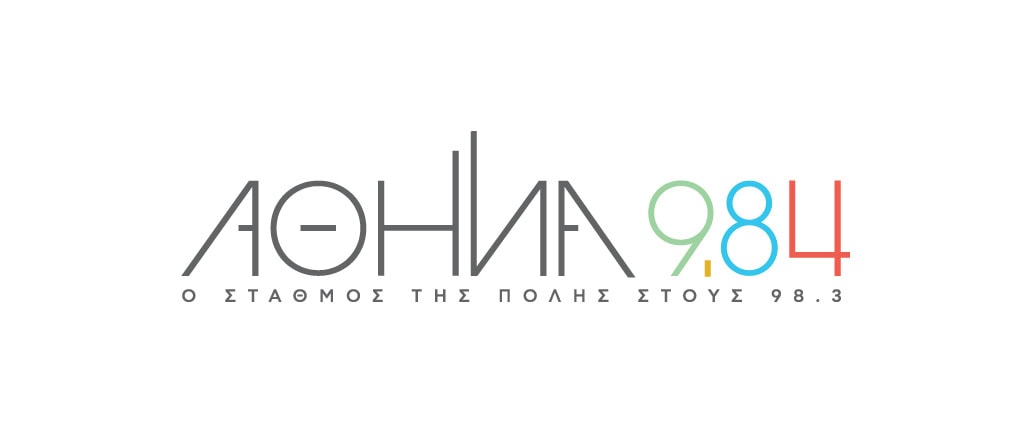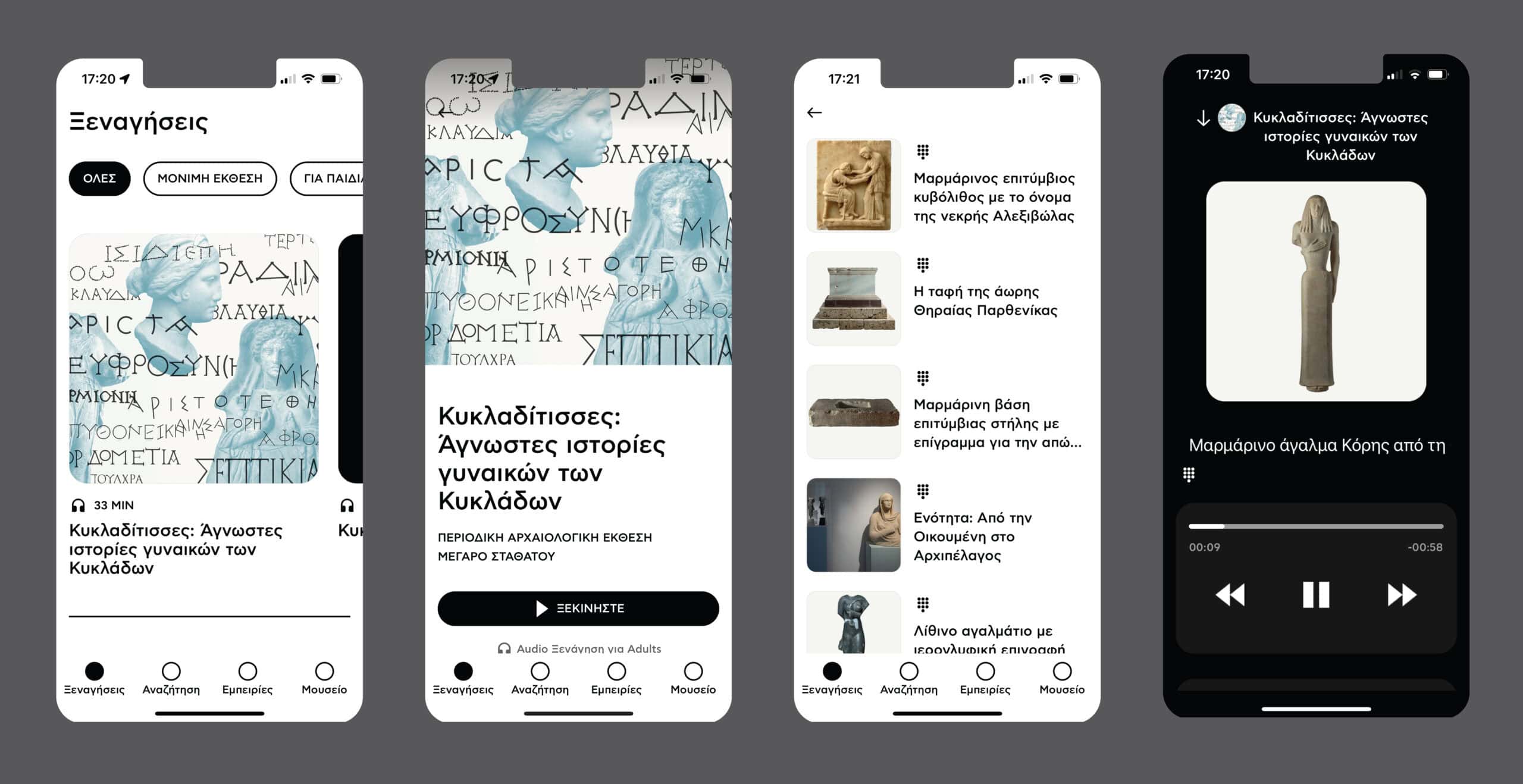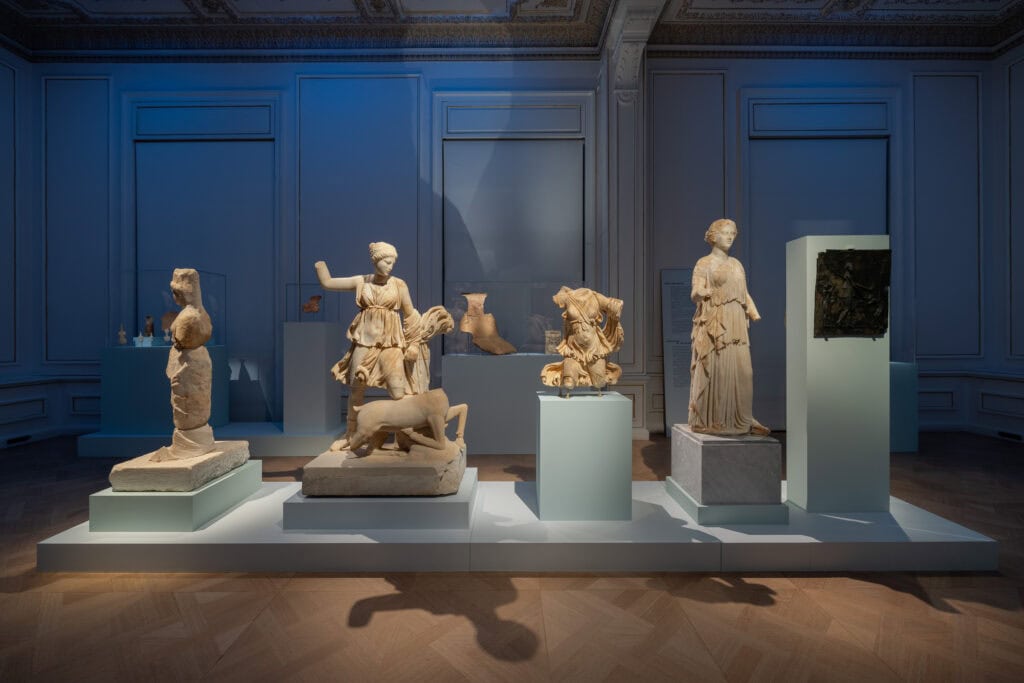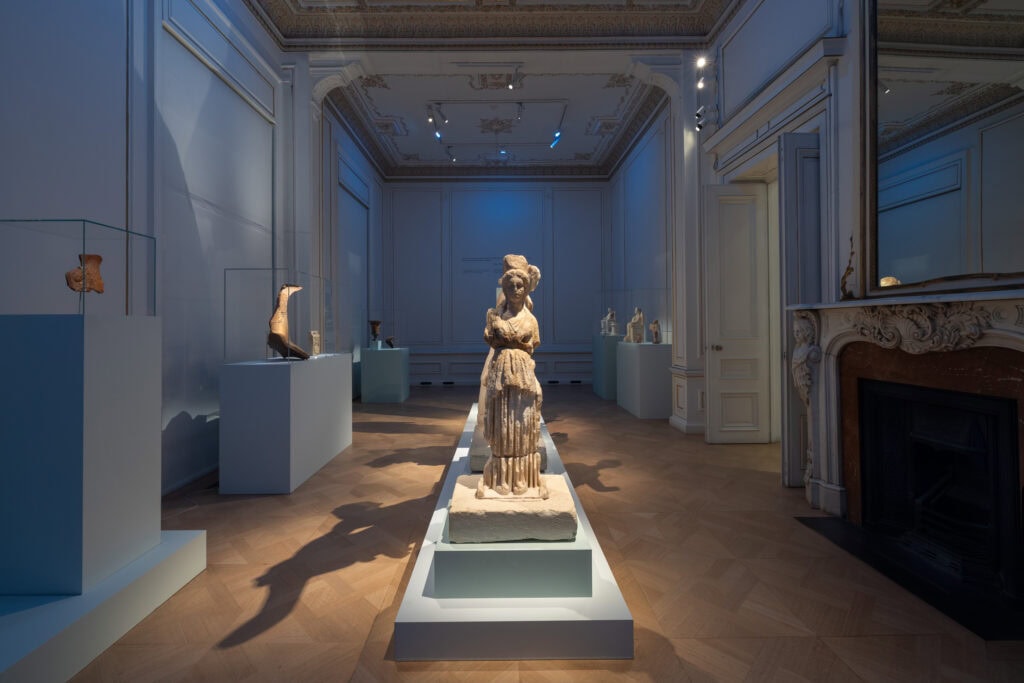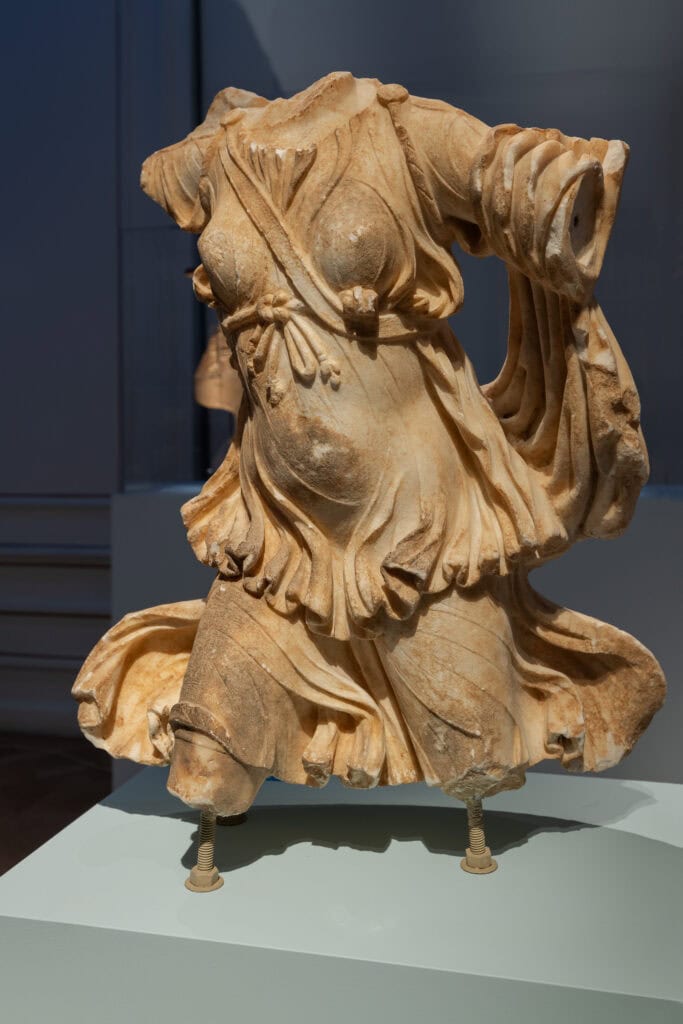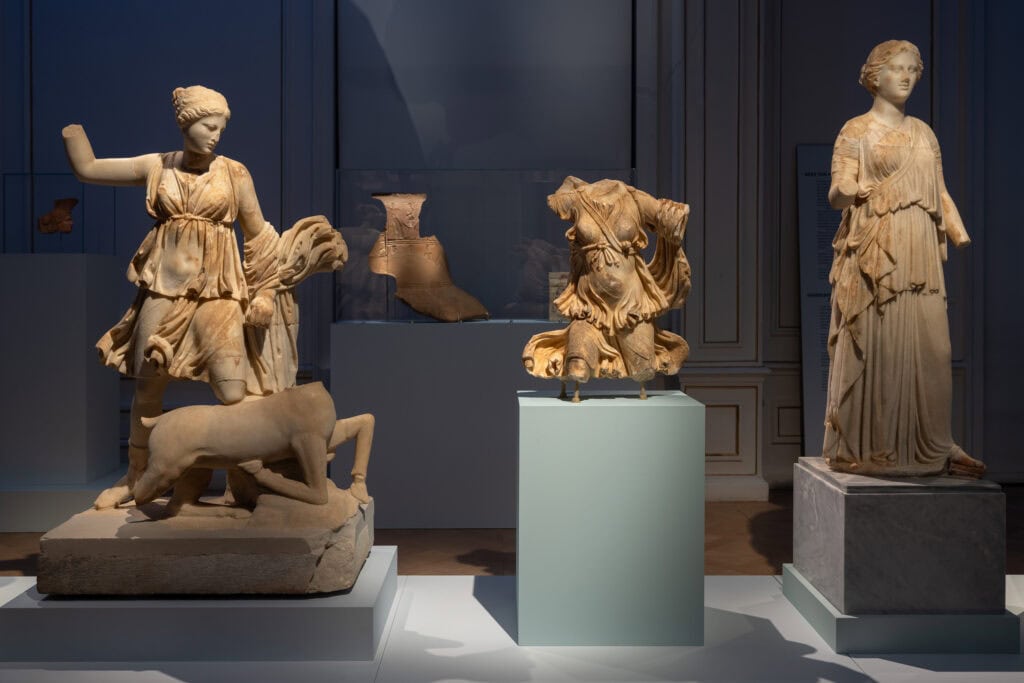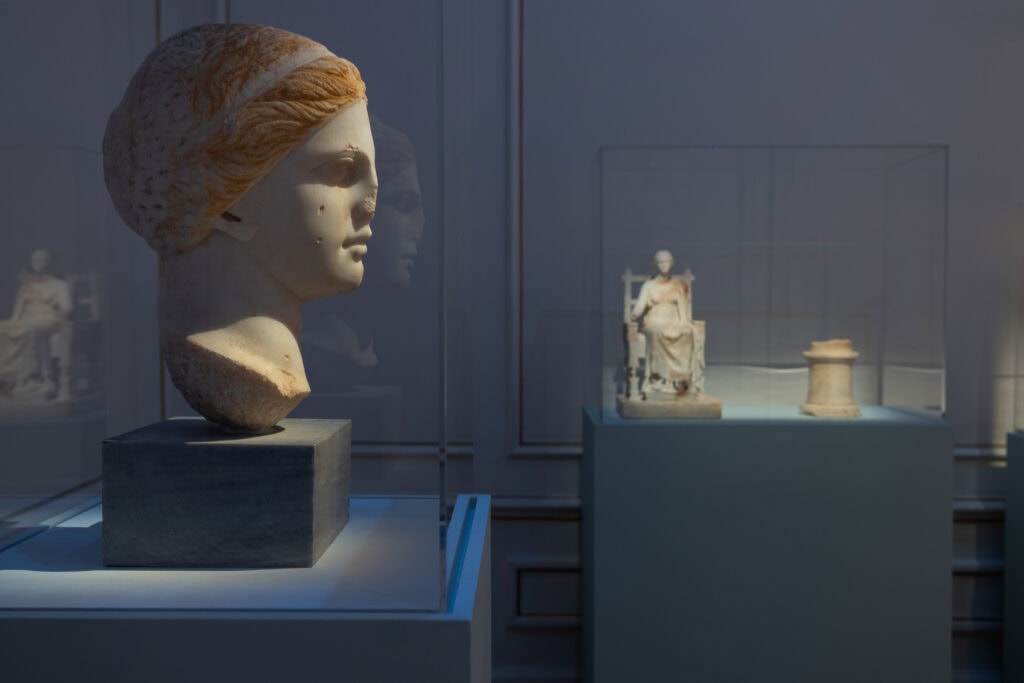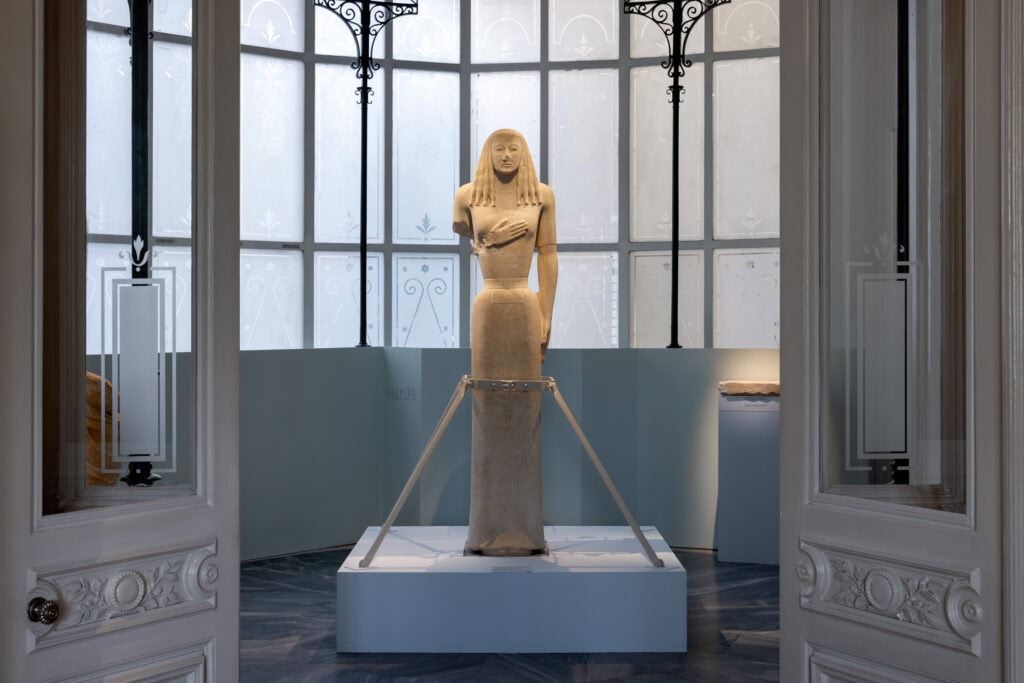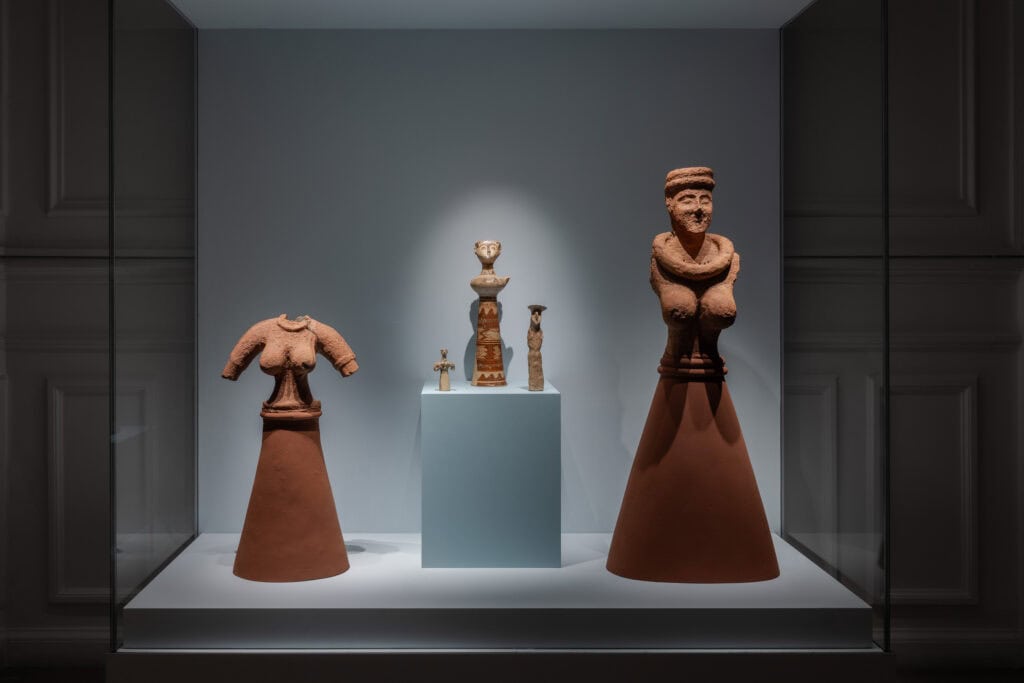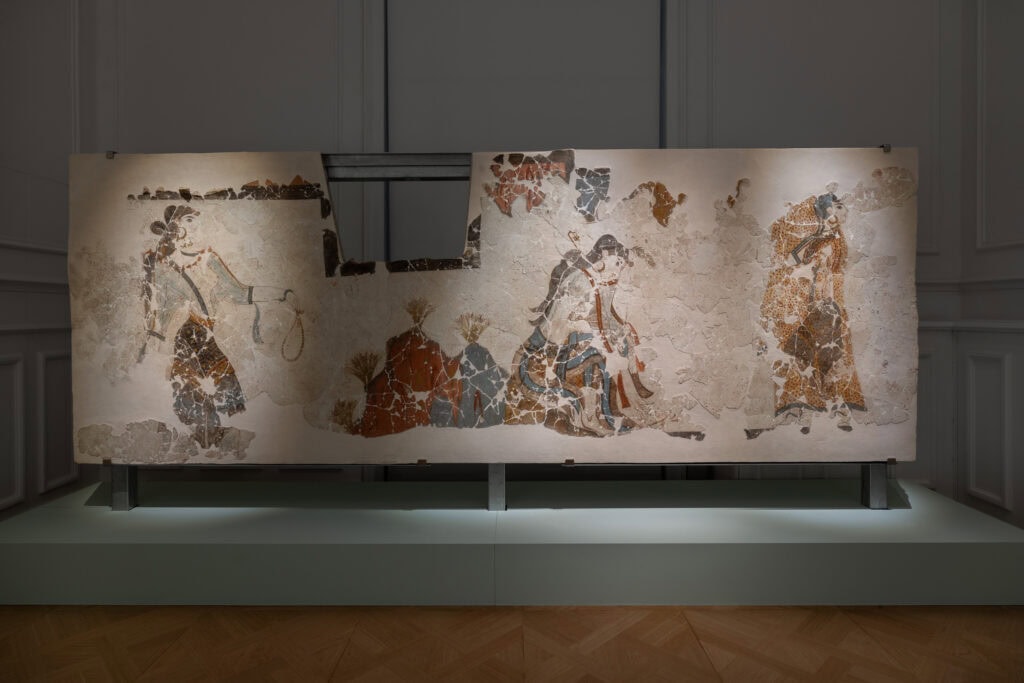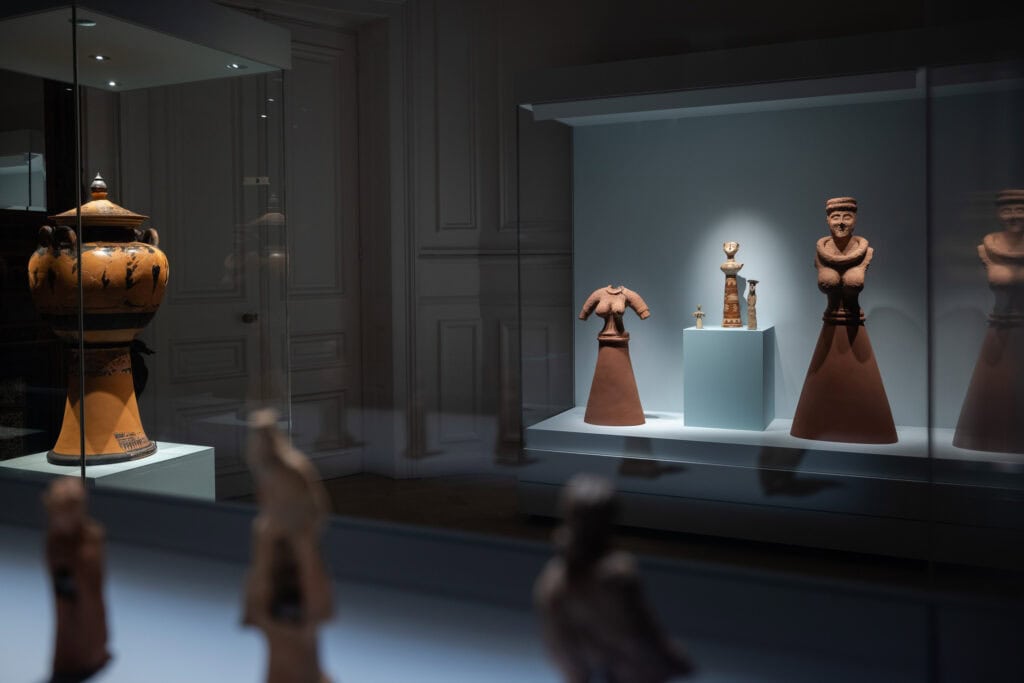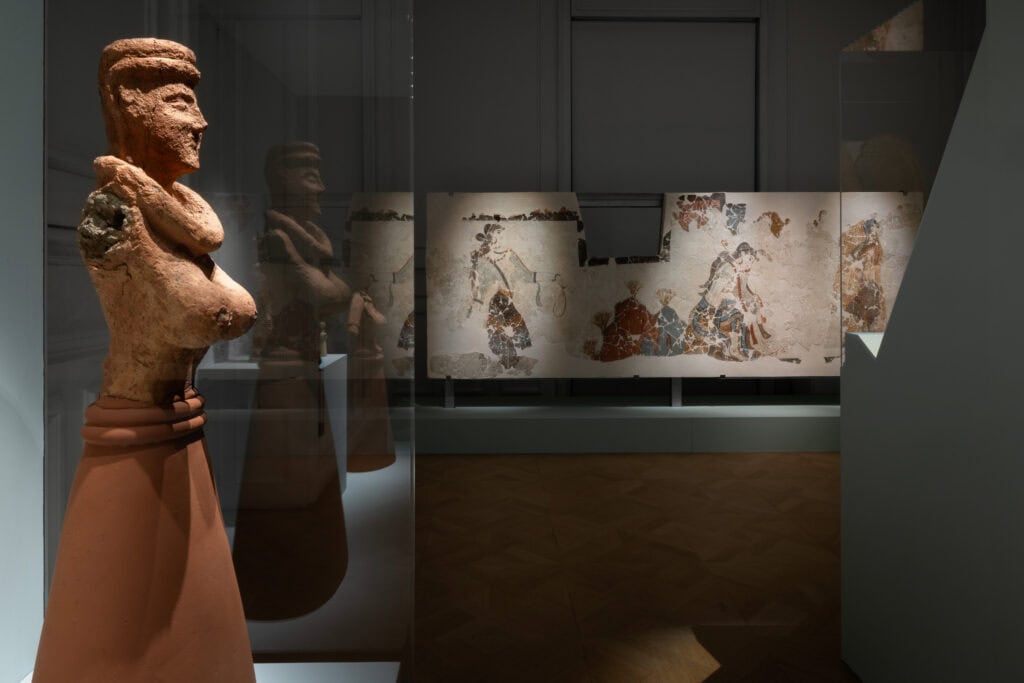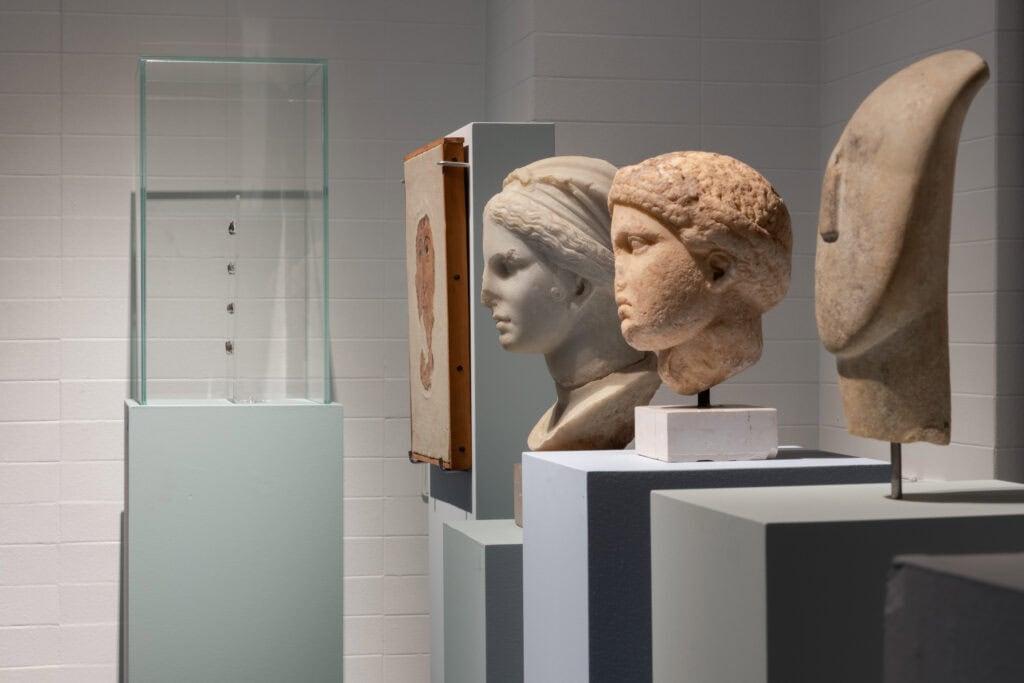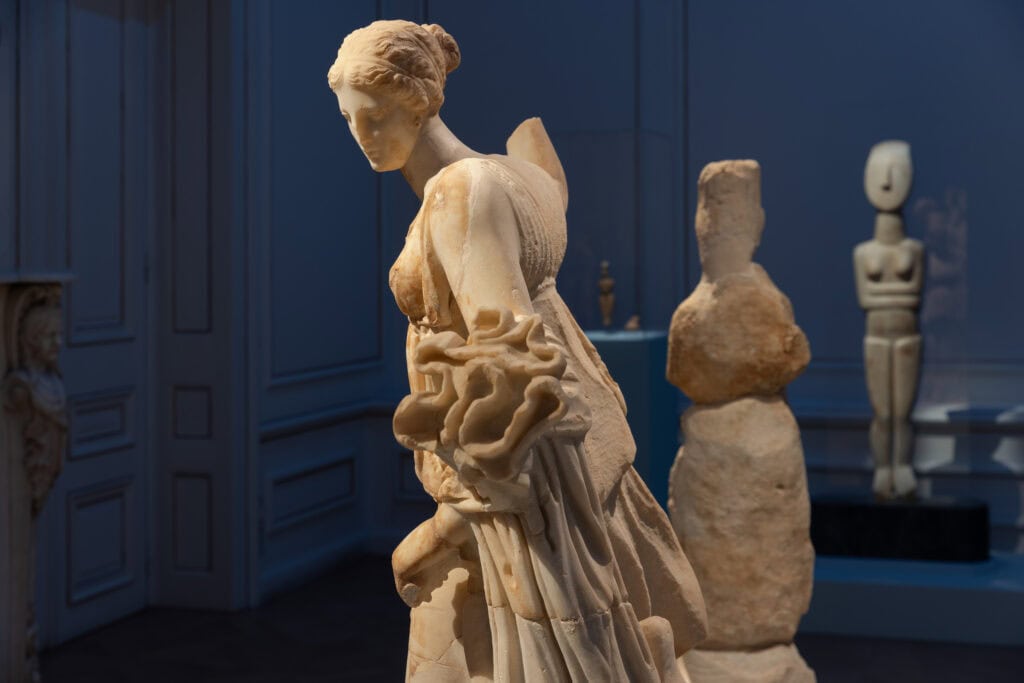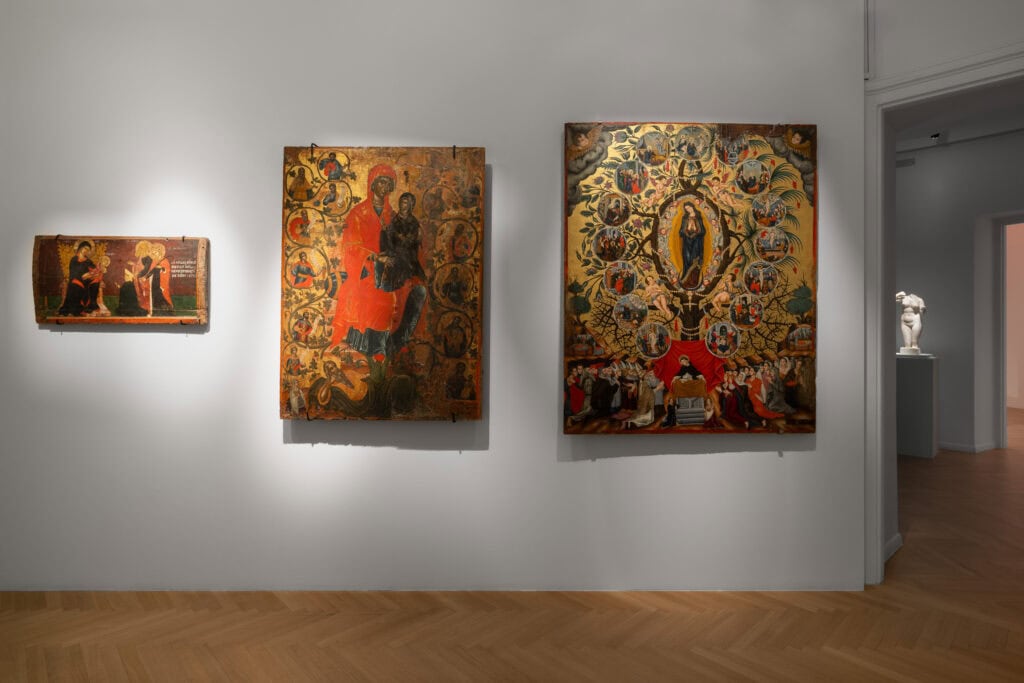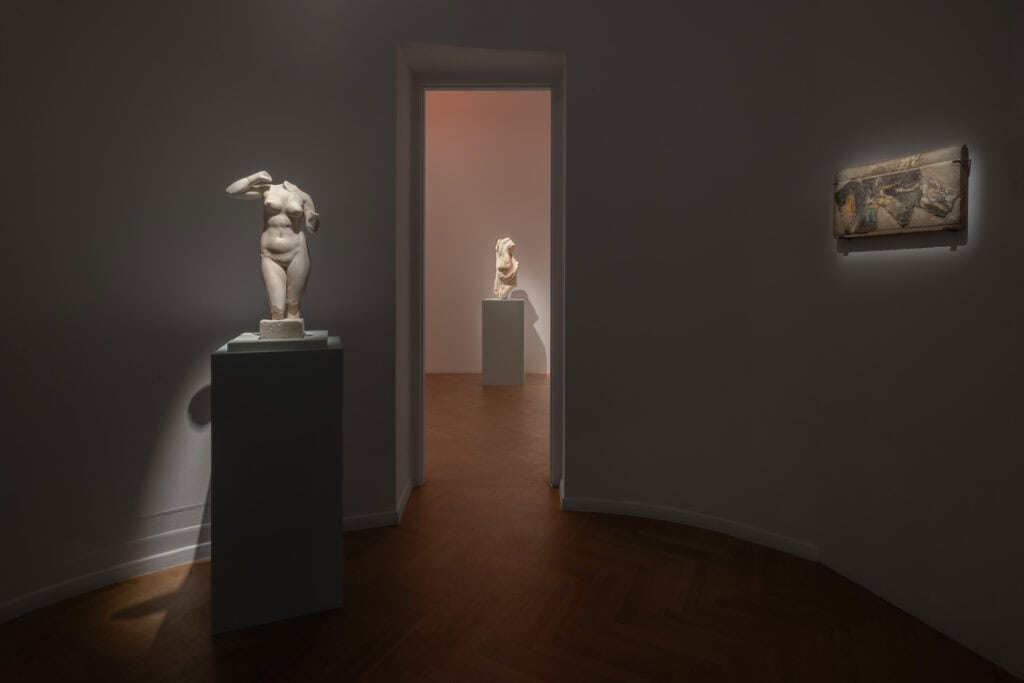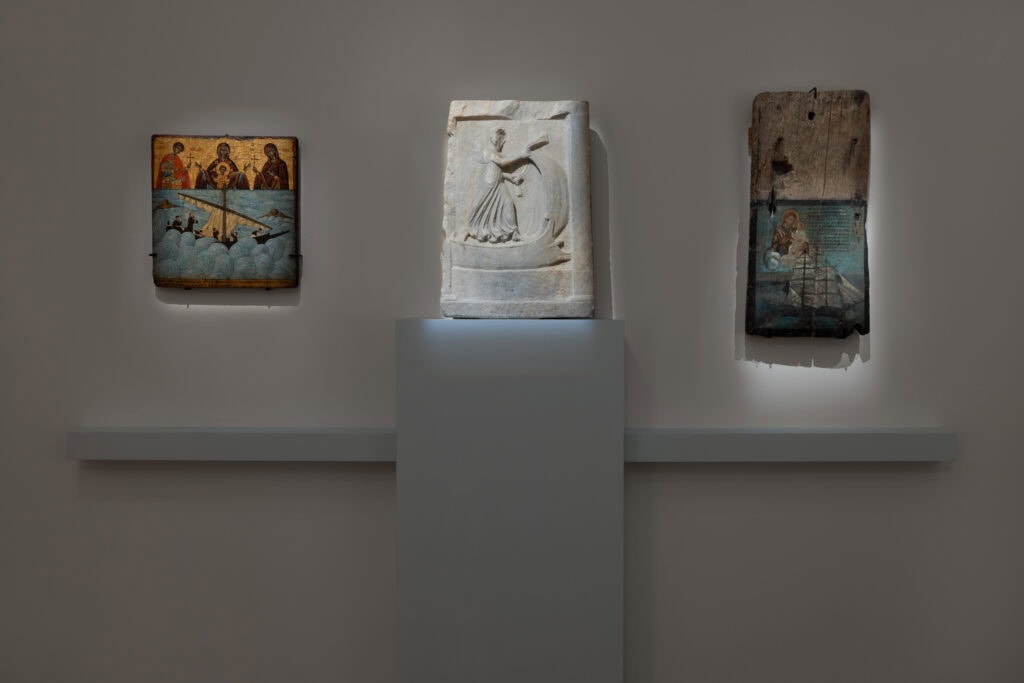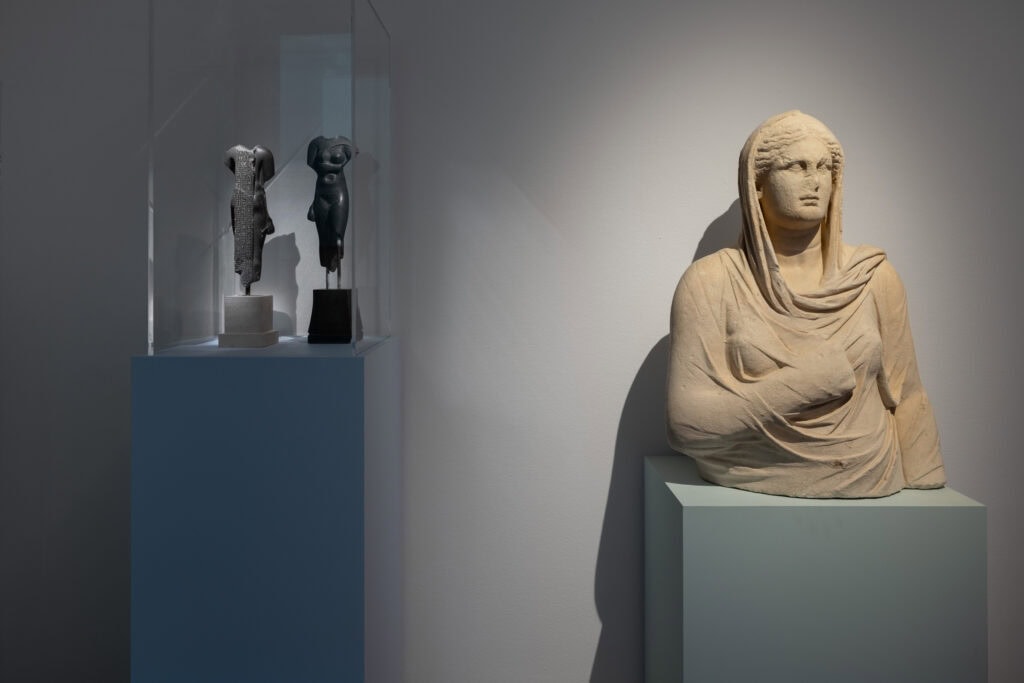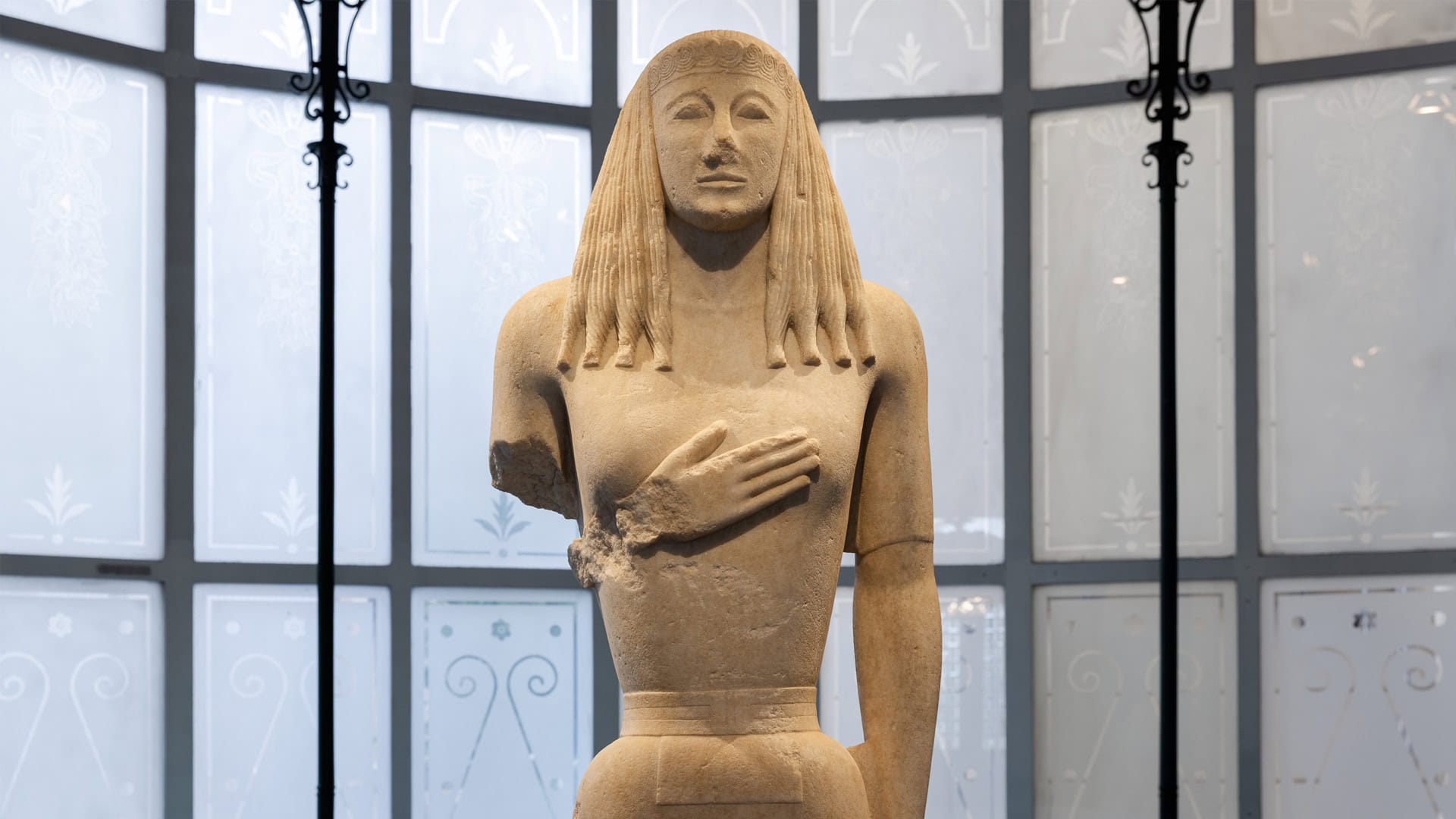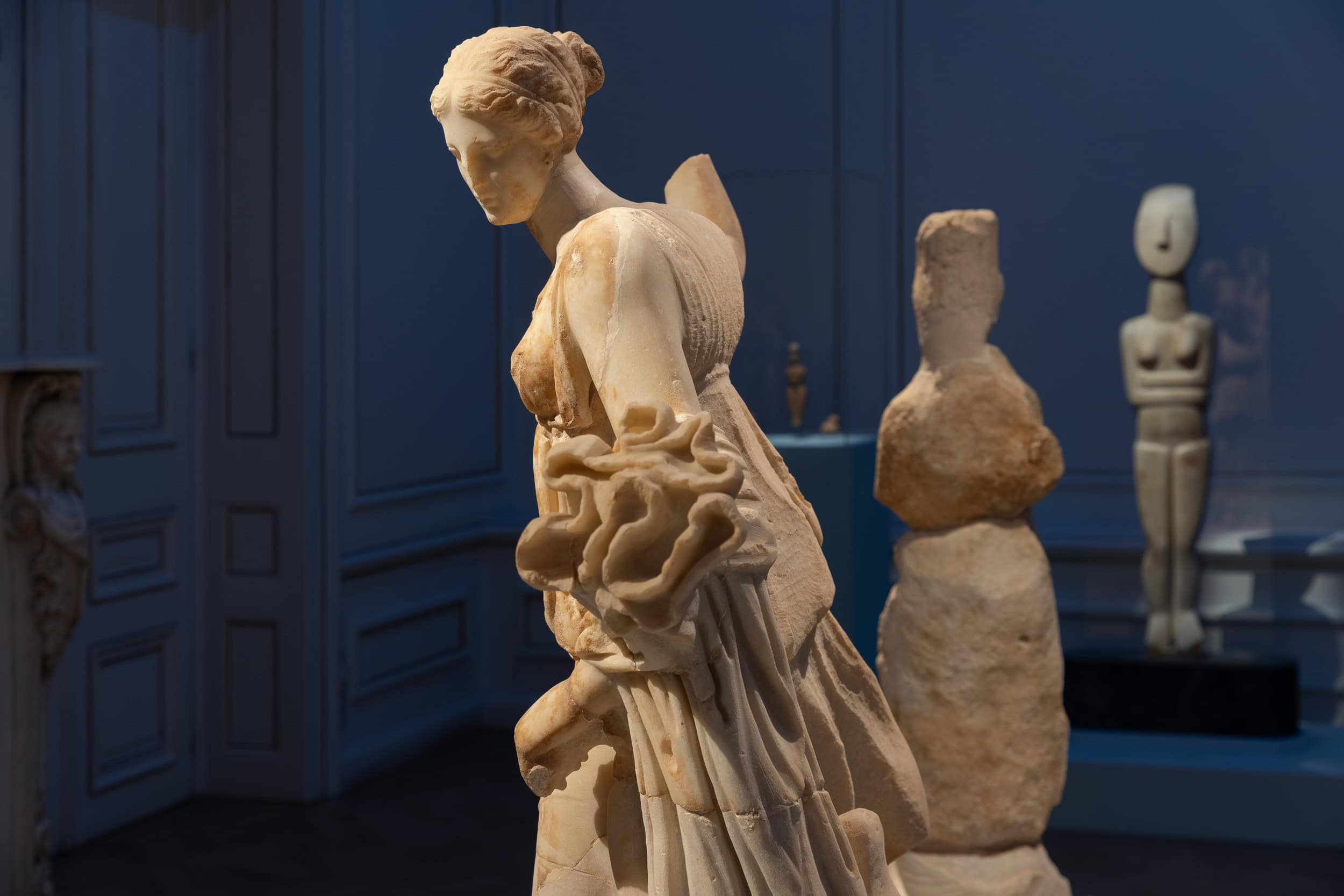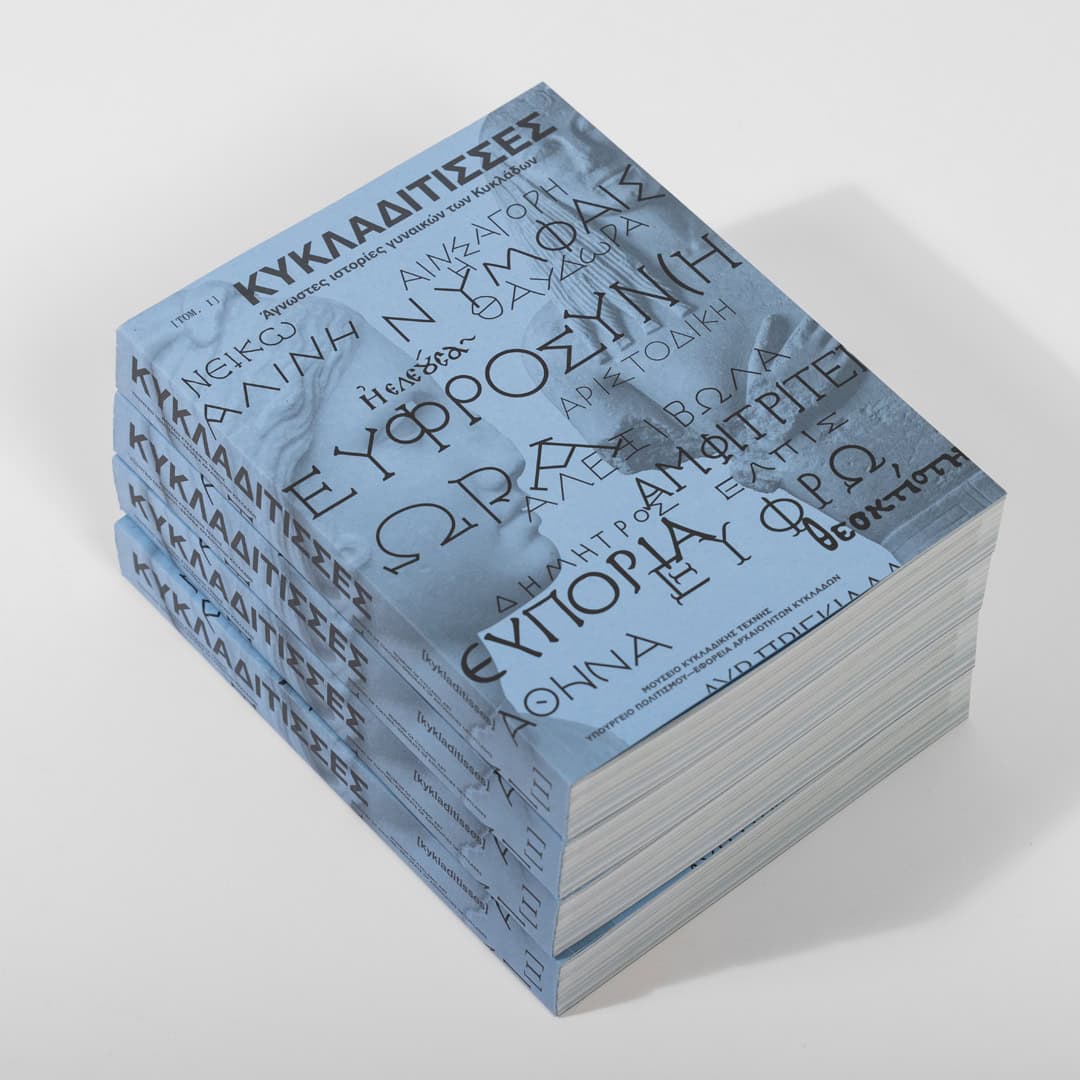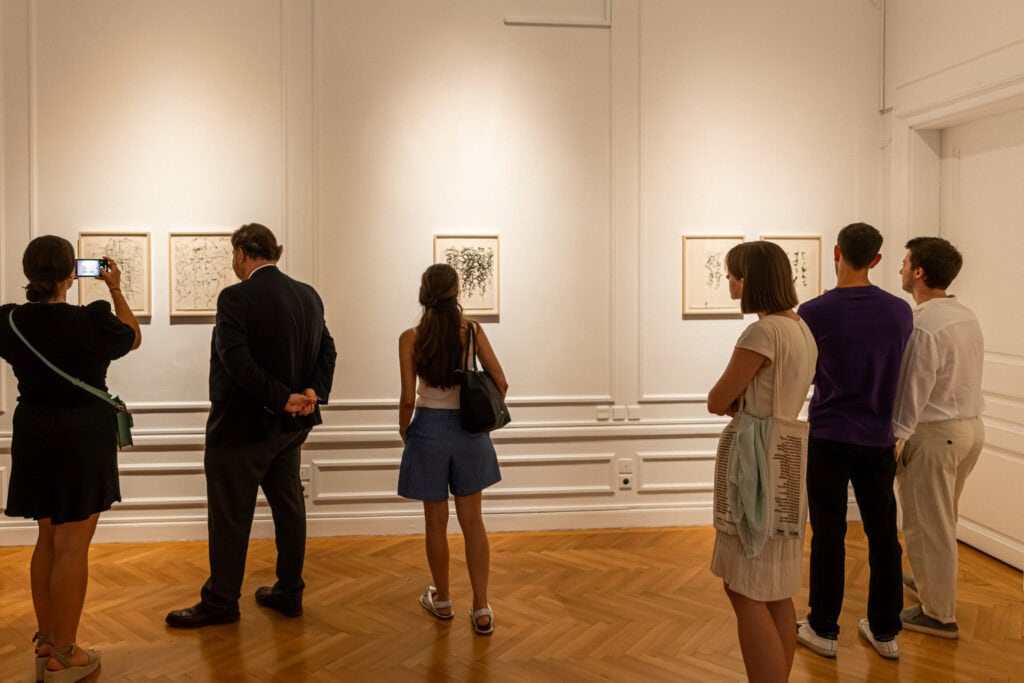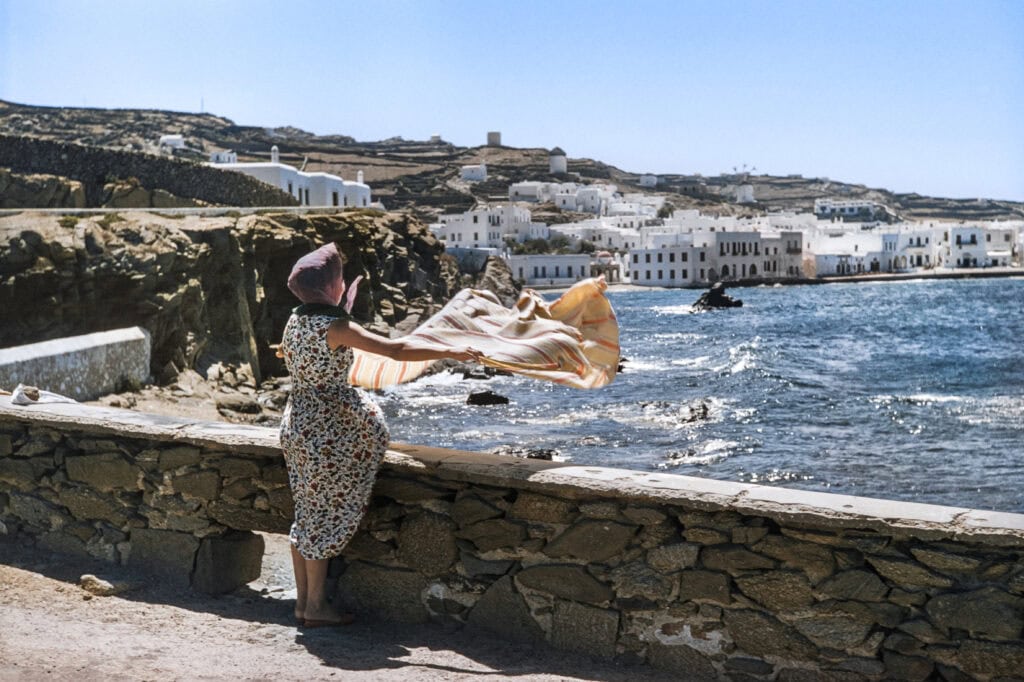Kykladitisses:
Untold stories of women in the Cyclades
ARCHAEOLOGICAL EXHIBITION
FROM DECEMBER 12, 2024 UNTIL MAY 4, 2025
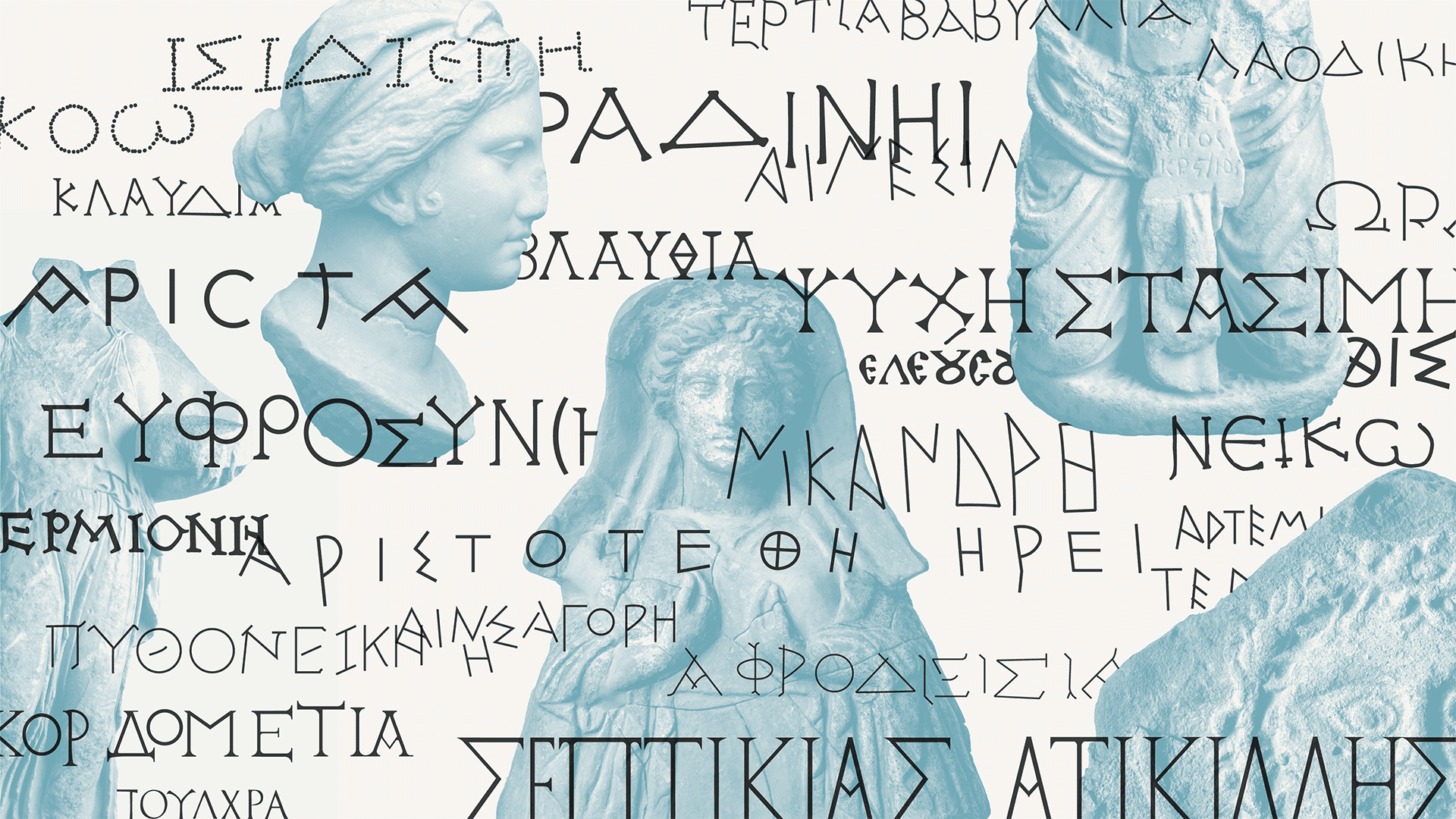
THE EXHIBITION
The islands of the Cyclades, known for their beauty and rich history, have been the cradle of a culture that has celebrated women like few others in the world.
The exhibition Kykladitisses: Untold stories of women in the Cyclades at the Museum of Cycladic Art pays tribute to the women of the Cyclades, shedding light on their lives and their role in the societies of the islands of the Archipelago from the Neolithic period until the 19th century. Over 180 masterpieces, most of which have never travelled outside the Cyclades, while others are being presented to the public for the first time, reveal the fascinating world of the women of the Cyclades, who emerge from obscurity and tell us their unknown stories.
Works of unique artistic value portray the Cycladic woman as a goddess, priestess, worshipper, mother, wife, merchant, fighter, intellectual, and sometimes as an image of fear, as a victim of gender violence or as an object of desire. Among them, three works stand out for their uniqueness and size: the Colossal Kore of Thera dated in the Archaic period, which is being exhibited to the public for the first time, the emblematic fresco of the “Women in the Sanctuary” from Akrotiri on Thera, and Artemis Elaphebolos from Delos, a statue from the Hellenistic period, which is being exhibited outside the island for the first time.
The exhibition will be presented in its entirety this Summer on Santorini Island and will inaugurate the renovated Archaeological Museum of Thera on June 20!
The exhibition, co-organized with the Municipality of Thira, will officially open to the public on June 21 and run until October 31, 2025.
ARCHAEOLOGISTS’ TALKS
AUDIO GUIDE
Get the most out of your visit by exploring the exhibition through the audio guide available in the Museum’s mobile app.
Download the app free of charge and unlock an in-depth curated narrative of the exhibition.
Join us as we travel through time and the history of the islands of the Archipelago following the transformations and the multiple roles of women from prehistory to the 19th century.
For an optimal experience, please follow the order of the exhibits as they appear on the app screen.
The audio guide tour is available in Greek and English.
You will need to use your headphones for the audio guide.
THE INSTALLATION
The exhibition invites the visitor to rediscover the history of the women who shaped the cultural identity of the Cyclades in their own unique way.
But why the Kykladitisses?
Simply because the island complex offers a wealth of sources related to the multiple roles that these women were called upon to play on the Aegean islands. Never has an attempt been made to present their story through the analysis of archaeological and historical sources of evidence in a continuous and easy-to-get way, especially in the context of an exhibition addressed to the general public.
The exhibition places the woman of the Cyclades at the central stage: not only because she can tell the history of the islands in a different way compared to that of ‘men’, but also because Cycladic women embody interesting similarities and differences in their roles through time.
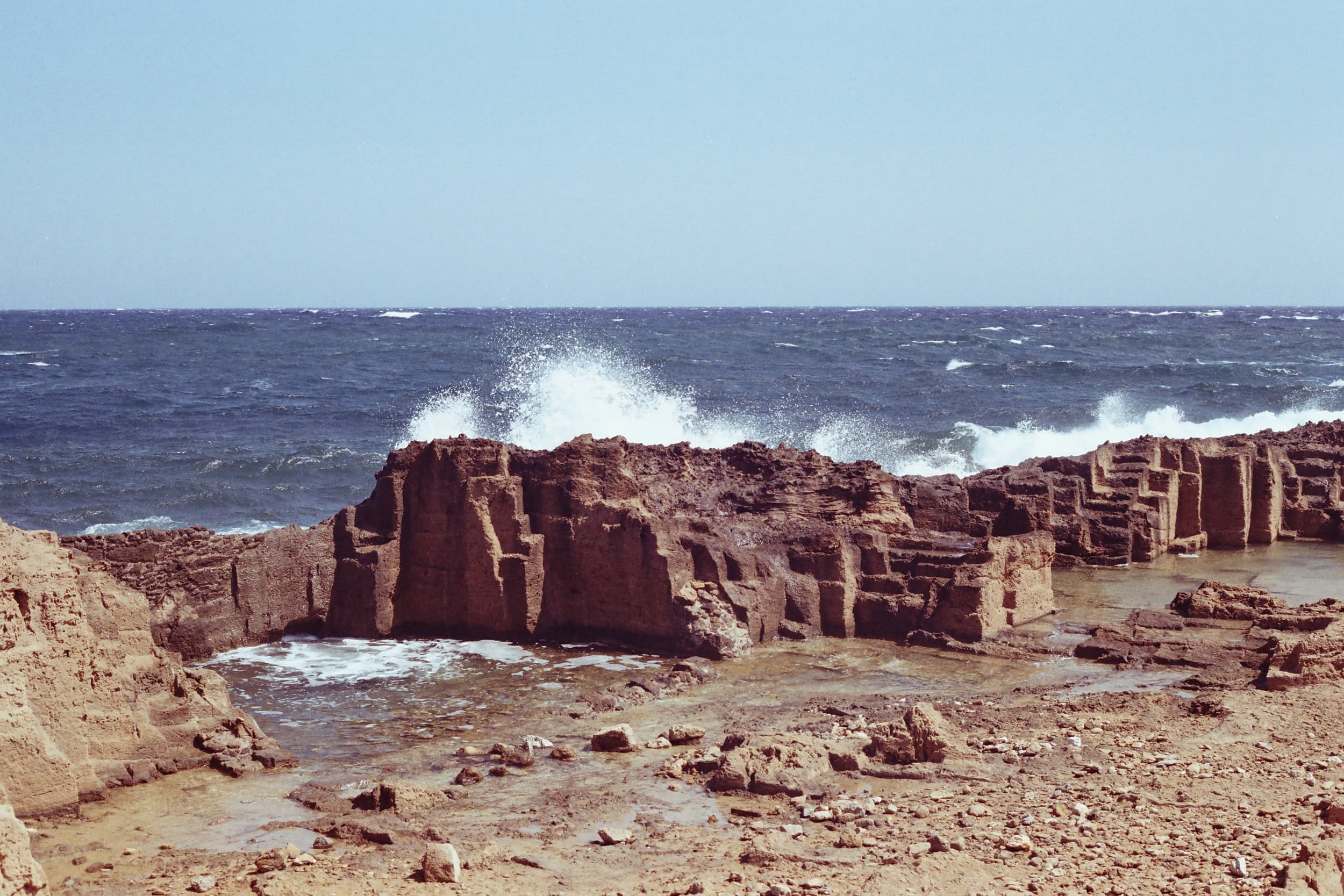
Kykladitisses are those women who are deified in Prehistory becoming in this way the main expression of the divine. They are those who are marginalized in the early historical years before they began to occupy a significant and dominant position in the Hellenistic and Roman periods. They are the travelers who come from distant places and meet their fate in the Cyclades. The goddesses and saints of the island religions who offer relief and healing. Those who are transformed from goddesses of nature and fertility into protectors of the sea and sailors. They are the dynamic women who later influenced the formation of the modern Greek state and contributed greatly to the Greek Revolution, inspired by the insularity of their homelands.
This is the second exhibition in the new series of archaeological exhibitions “Human Histories” at the Museum of Cycladic Art. These tell and illustrate stories about life, customs and works of mortals, which influenced the life and perceptions of later generations. As a result, the exhibition on Kykladitisses also takes on a strongly emotional character, as the display of their unknown stories reminds us that behind the great island culture have always been the women who left their mark on history.
The exhibition, which is the first joint action of the Museum of Cycladic Art and the Ephorate of Antiquities of Cyclades, in implementation of the Memorandum of Cooperation signed on May 17, 2024, aiming at the study and promotion of Cycladic culture in Greece and abroad, will travel to the place of origin of the finds, where it will be presented in its entirety at the renovated Archaeological Museum of Thera.
IN THE NEWS
EURONEWS
ARTNET
Co-organization
Museum of Cycladic Art
Curated by
Prof. Panagiotis P. Iossif, Academic Director of the Museum of Cycladic Art, Professor of Ancient and Medieval Numismatics, Radboud University, Nijmegen, Netherlands
Assistant Prof. Ioannis D. Fappas, Academic Director of the Museum of Cycladic Art, Assistant Professor of Prehistoric Archaeology at the Aristotle University of Thessaloniki
Exhibition Design
Architectural Concept: Katerina Apostolou – AKA Apostolou Colakis architects
Lighting Design
Visual Identity
PARTICIPATING MUSEUM & INSTITUTIONS
Archaeological Collection of Amorgos, Archaeological Collection of Seriphos, Archaeological Collection of Sikinos, Archaeological Museum of Andros, Archaeological Museum of Delos, Archaeological Museum of Ios, Archaeological Museum of Kea, Archaeological Museum of Kythnos, Archaeological Museum of Melos, Archaeological Museum of Mykonos, Archaeological Museum of Naxos, Archaeological Museum of Paros, Archaeological Museum of Siphnos, Archaeological Museum of Syros, Archaeological Museum of Tenos, Archaeological Museum of Thera, Museum of Prehistoric Thera, Museum of Cycladic Art, Ephorate of Paleoanthropology-Speleology, Holy Metropolis of Paronaxia, Holy church of Panagia Eleousa, Chora, Naxos, Holy Metropolis of Syros-Tenos-Andros-Kea-Mykonos-Melos-Siphnos-Seriphos-Kimolos-Kythnos-Folegandros-Sikinos, Church of the Holy Trinity, Adamas, Melos, Holy church of Panagia Korfiatissa (Nativity of the Virgin Mary), Plaka, Melos, Church of the Holy Trinity, Megalo Chorio, Seriphos, Holy Metropolis of Thera, Amorgos, and Nisoi, Monastery of Panagia Chozoviotissa, Amorgos, Catholic Archbishopric of Naxos-Tenos-Andros-Mykonos, Metropolitan Catholic Cathedral of the Presentation of the Christ in the Temple, Naxos, Aikaterini Laskaridis Foundation, Benaki Museum, Epigraphic Museum, General State Archives, National Library of Greece, Paul and Alexandra Canellopoulos Museum, Private collection (Ε.Κ.)
EXHIBITION CATALOGUE
A Greek English bilingual catalogue published as part of the new series of archaeological exhibitions organized by the Museum of Cycladic Art called “Human Histories” for the exhibition “Kykladitisses: Untold stories of women in the Cyclades”. The catalogue presents the transformations and the multiple roles of women that have defined the history of the Archipelago through time highlighting their importance at a time when women continue to assert their independence and respect for their specificity within the modern community, the free choice of the roles that express each of them and their liberation from stereotypes that survive in the common consciousness despite the long struggles of past centuries. The catalogue is divided into two volumes.
The first volume contains 520 pages in which all the artefacts in the exhibition are illustrated in each section in extremely high quality and resolution photographs, together with a brief explanation giving all the details of their identity.
CYCLADIC FRIENDS
BE
FRIENDS
MORE

